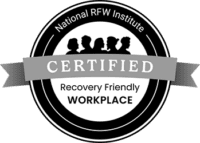Increasing Joy In Practice and Job Satisfaction for Health Care Providers
The health care industry comprises more than 10% of our nation’s GDP, making it one of the most important in our country. According to the Bureau of Labor Statistics, health care jobs are “expected to have the fastest employment growth and to add the most jobs between 2014 and 2024.” By 2024, five million job openings will need to be filled by skilled healers.
With such a large-scale, powerful industry driving our nation’s health and growth, one would suspect that health care staff would have excellent job satisfaction — though that’s not necessarily so.
Health Care Burnout
According to the Institute for Healthcare Improvement, 54% of physicians are burned out and 37% of newly registered nurses are considering leaving their job. Furthermore, when asked about happiness at work, only 33% of men and 26% of women reported being happy at work in the 2016 Medscape Lifestyle Report.
It is because of statistics like these that the NIH is focused on adding a fourth component to the triple aim in 2017 – that of improving the work life of clinical care providers and increasing their Joy in Practice.
Finding Joy in Practice
According to the Institute for Healthcare Improvement, “The most joyful, productive, engaged staff feel both physically and psychologically safe, appreciate the meaning and purpose of their work, have some choice and control over their time, experience camaraderie with others at work, and perceive their work life to be fair and equitable.”
Three Quick Hit Ideas to Improve Provider Joy in Practice:
- Use time wisely. Where possible, re-engineer workflows to increase quality time with patients and leverage resources that allow providers to focus on delivering the clinical care they were trained to. Using any web-enabled device, GoMo Health’s Bedside Concierge™ solution enables patients to make their non-clinical “comfort” requests directly to the departments that can service them – eliminating the “telephone game” of routing these requests through the nurse (call button), and alleviating the nurses as “middle men” in processing these requests, keeping them focused on clinical care delivery.
- Recognize Achievements of Employees. Employees who are recognized and/or rewarded for a job well done feel more appreciated, and are thus more likely to continue to perform at a higher productivity level. Putting a system in place to allow staff and patients to give praise to the staff they work with is an easy and cost-neutral method to encourage a continued job well done. “Staff Applause” is a feature in the GoMo Health Bedside Concierge™ solution, and patients regularly use it to praise the staff members who make a positive impact on their experience. This real-time patient feedback is then shared with the employee, their supervisor and human resources, and this data can be leveraged by the hospital to promote their employees and quality of work environment.
- Align organizational and employee goals. Most health care providers have entered the field because their passion is helping other people. Make sure that your organization’s mission is clearly defined so that employees can align their personal mission with it, and wherever possible, provide the resources for them to grow professionally and develop their skills even further. Nurturing employees’ personal career development will garner a greater sense of loyalty, commitment and desire to perform.
When staff members are happy in their jobs, health care organizations can deliver high-quality patient-centered care. To learn more about solutions for increased Joy in Practice, click the button below.






Find Us Online